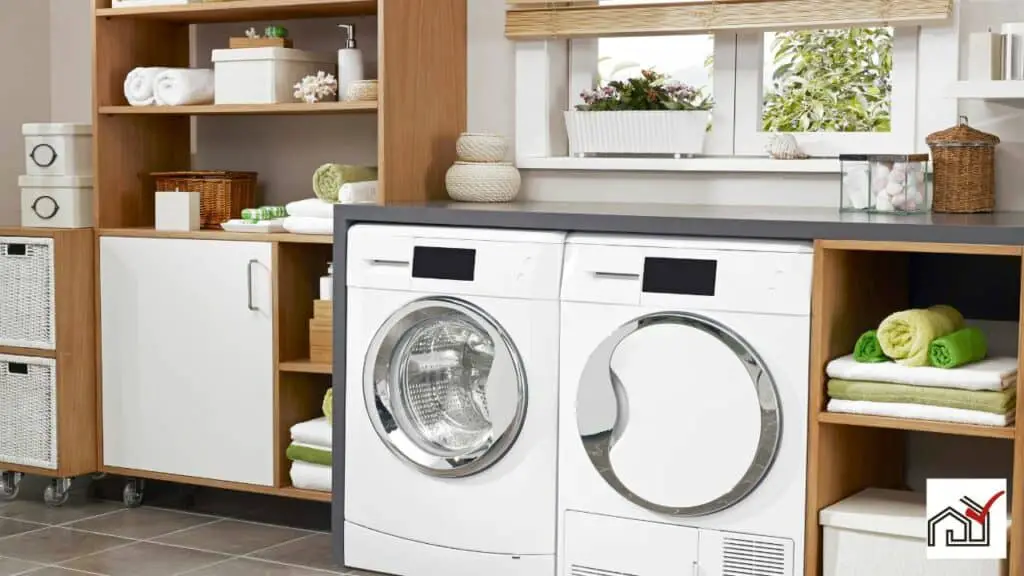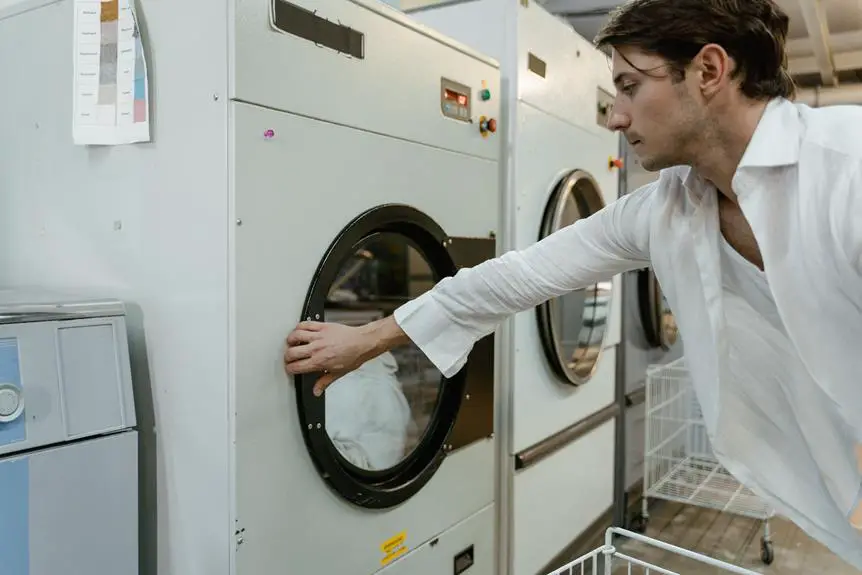A laundry room does not need to be on an outside wall. The misconception that it does is primarily due to the external venting needs of gas dryers. Electric dryers can sometimes use internal venting, offering more placement flexibility.
Plumbing for washers can be challenging but can be managed. This text will cover the necessary ventilation and plumbing considerations, examine different dryer placement options, discuss how to ensure efficiency and safety in the design, and present ways to fit a laundry room inside a home without relying on placement along an exterior wall.
Understanding Ventilation Requirements
Effective ventilation is essential in laundry rooms to maintain safety and air quality. A proper ventilation system must include a dryer vent to remove the moisture from the drying process, which prevents mold and maintains air quality.
Gas dryers require venting to the outside to eliminate moisture and combustion fumes, including carbon monoxide, to avoid health and safety hazards.
Electric dryers have more flexibility with venting. They can vent outside or use an indoor vent kit when outside venting isn't possible. However, indoor vent kits may increase indoor humidity.
Adding an exhaust fan in the laundry room can improve air circulation, removing moisture and odors. This is especially important for rooms without direct outside access.
It's important to design ventilation systems that meet the needs of both gas and electric dryers and adhere to local building codes and manufacturer guidelines.
Exploring Dryer Placement Options
Dryers are typically positioned near an outside wall to allow for direct venting. However, various venting options exist that can accommodate different layouts. When choosing a location for a dryer, it is important to consider the type of dryer.
Gas dryers must exhaust outdoors to eliminate fumes and heat, restricting their placement to areas where they can vent directly outside. Advanced ductwork may increase placement options within a home, but the venting must be efficient and meet safety codes. The distance from the dryer to the outside wall is important for safety and efficiency.
Electric dryers offer more flexibility in placement. They can use indoor vent kits when an outside wall is not within reach. These kits have a lint trap and expel moisture indoors, but external venting is preferable. Indoor venting is a last resort when outside venting is not possible.
Both electric and gas dryers need correct wiring and plumbing. Regular maintenance of the vent system is essential to prevent lint accumulation, a fire risk. If placing a dryer against an outside wall, especially in cold climates, insulation is important to prevent heat loss and maintain energy efficiency. Proper planning ensures the dryer placement is safe and functional.
Plumbing Considerations for Washers
In planning a laundry room, it is important to consider the plumbing needs for a washing machine. Washers require access to a water supply and a drainage system. They typically need both hot and cold water lines, but some models may only require a cold water supply.
An efficient drainage system is crucial for a washer to dispose of water after use. While washers were traditionally placed near an exterior wall for drainage, alternative methods like connecting to a utility sink or a standpipe are available.
Before installing a washer, one should review the manufacturer's specifications for any plumbing requirements. Some washers are designed with flexible plumbing options to fit different drainage systems. It is also important to ensure that the laundry room walls can accommodate the plumbing, as confirmed by a professional plumber, even if an exterior wall is not used.
Designing for Efficiency and Safety
Laundry rooms can now be more efficiently and safely located within a home by adhering to proper design and ventilation standards. It is important to place laundry rooms based on the requirements of the appliances. Gas dryers must have outdoor ventilation to remove combustion fumes and heat, which is a critical safety requirement.
Electric dryers offer placement flexibility as they can be vented outside or with an indoor kit. However, it is crucial to ensure that any indoor venting system is effective and well-maintained to prevent moisture and lint accumulation, which could pose mold and fire risks.
Adding an exhaust fan to the laundry room can improve air circulation by removing moisture and odors, creating a safer and more comfortable environment. Including a sink and countertop in the design can also enhance the room's functionality by enabling laundry pre-treatment, folding, and organization, thus improving efficiency.
Dryers can be installed on interior walls with appropriate venting. Yet, it is essential to clean the dryer vent at least twice a year to avoid dangerous lint buildup. Regular maintenance is vital to keep the laundry room efficient and safe.
Alternative Solutions for Interior Spaces
There are multiple solutions for installing laundry appliances in interior spaces that lack external walls. Traditional laundry rooms are typically located along outside walls, but this is not always necessary due to modern appliance technology and design.
One option is to use electric dryers with indoor vent kits, which allow for the venting of hot air and moisture inside the home in a controlled way. These kits require proper installation and maintenance to maintain indoor air quality. Washing machines can be set up with an interior drain system if there is access to a sink or in-floor drain. Elevating the machine on a platform or risers can help achieve the correct water flow for drainage.
Adding an exhaust fan to the laundry area can help control moisture and odors, which is particularly useful in humid regions or during cold seasons when windows remain closed.
Portable washers and dryers offer flexibility because they don't need permanent installations, making them suitable for apartments or homes where installing permanent fixtures is not feasible.
It's also important to follow the manufacturer's recommendations for using laundry aids like fabric softener, as these can impact both performance and maintenance. Regular maintenance is essential for the longevity and efficiency of laundry appliances, regardless of where they are located in the home.





